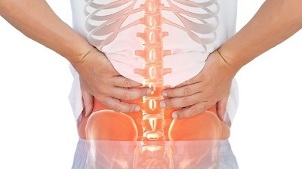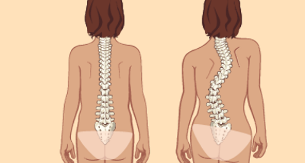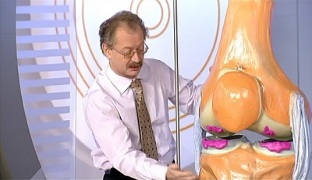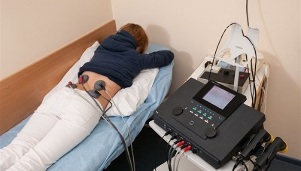
Osteochondrosis is one of the most common problems associated with back disease.
This disease means a change in the internal shape of the spine, as well as a decrease in the plasticity of the discs located between the vertebrae, during which there are disorders related to cell nutrition.
The lumbar spine suffers the most, as this part of the spine takes most of the load. When you lift heavy objects, all the force to which your body is exposed is directed to the distance between the vertebrae, which leads to compression of the nerve roots. That is why there are problems and pains associated with lumbar osteochondrosis.
Causes of lumbar osteochondrosis
These causes can occur even in the younger generation, especially if there are different types of musculoskeletal problems. These include:
- congenital defects, eg different limb lengths;
- flatfoot of different types and stages;
- changes in the shape of the spine (scoliosis);
- change in the location of the lumbar vertebra, which can slide from the sacrum in different directions.
These diseases have the ability to have a negative impact on the spine, causing disorders of its functions. Doctors often believe that lumbar osteochondrosis can occur at the genetic level. For example, if your parents have suffered from this disease, then there is a high probability that their child will also suffer from such diseases of the spine.
In addition, the most well-known cause of the disease is hard physical labor. In fact, when lifting too heavy objects, there is a large load on the lumbar spine, which leads to its violation.
The next cause of lumbar osteochondrosis is obesity. Excess weight, like ballast, accumulates on the body and in the body, having a negative effect on the spine and vertebrae, causing heaviness and pain during movement. If at first glance it seems to you that the violation of the shape of the spine will not lead to negative consequences, then you are in a big mistake. This problem leads to wear of the discs located between the vertebrae, which leads to the further development of osteochondrosis. That is why it is imperative to monitor the condition of your body and prevent excess body fat in it. Adipose tissue interferes with movement, adding extra stress to muscles, joints, tendons and the spine.
Another well-known cause of spinal disease is a back injury. Impacts, bruises, lifting heavy loads and shells in athletes who are not prepared for such loads have a negative impact on the back. Injury to one of the spinal sections can lead to negative consequences in the future, such as osteochondrosis of the spine.

And the most popular cause of back pain is, as everyone knows, an inactive lifestyle, when most of the time a person spends sitting in one place without exercising and stretching. Most often this applies to people who work in offices or just like to be in one place for a long time without moving, not playing sports or stretching. To keep your back and spine healthy (and your body as a whole), you need adequate physical activity. If you move a little and sit constantly, this can lead to impaired blood circulation in the body. Due to this factor, back pain occurs, the body does not receive all the nutrients, there is a weakening of the spine and many other diseases.
A healthy lifestyle is one of the postulates of healthy blood vessels and joints. Take time to exercise regularly and your body will respond positively to it.
Diseases caused by infections or inflammatory processes in the body have a negative effect on bone tissue and the condition of the ligaments, which can lead to weakening of the vertebrae. Most of the loads are taken by the lumbar region, which can lead to a change in the shape of the vertebrae.Stress also causes pain in the spine, especially in women, as they experience feelings and emotions more strongly. Stress has a negative effect on the health of the body as a whole, its nervous system. Against the background of stress, various types of diseases, including lumbar osteochondrosis, can worsen and become inflamed.
Help!You should monitor your nerves carefully and avoid situations involving irritation or negative emotions.
Symptoms of lumbar osteochondrosis
It is very difficult to identify the disease at an early stage. Most diseases are asymptomatic, but everyone is able to experience unusual sensations in the body. That is why it is extremely important to determine the first symptoms of spinal disease. The pain comes gradually, you should be able to identify them correctly and contact a specialist in a timely manner, because in the early stages it is easiest to cure the disease.
Most symptoms have one characteristic:

- Lumbar pain. In general, two types are distinguished: neurogenic pain and muscle pain. The intervertebral disc itself does not feel pain because it does not contain nerve endings. Painful sensations occur as a result of the destruction of the discs of the nerve roots that protrude from the opening between the vertebrae.
- The pain is too sharp, like shooting. One grasps the lower back and is unable to stand up for fear of feeling pain again. Such pain occurs as a result of swelling of the nerve root, which does not have enough room to stay.
- In addition, the pain is caused by swelling of the back muscles. With swelling, there is a problem with the supply of glucose and air to the muscle fibers in the back. That's why muscles are stressed. They are hungry and also have the ability to remove lactic acid from the fibers that have formed in them during muscle activity. Therefore, the muscle undergoes contraction, which causes pain and spasm. The person feels pain, stiffness and discomfort in the back and lower back.
- Because the disc has the ability to squeeze the motor root, an attack of paresis or paralysis is possible. There may be a feeling of weakness in the limbs, which contributes to gait disturbance.
- Muscle loss may occur in which one of the limbs decreases in volume. There is also a feeling of tingling in the legs, tingling, impaired growth of stripes and nails on the limbs.
Scoliosis can lead to serious consequences, including injury and damage to internal organs.
So, here are the main signs and symptoms of lumbar osteochondrosis:
- radicular pain;
- back muscle pain;
- movement disorders;
- impaired sensitivity of the limbs;
- ominous sensations, tingling in the legs, stunted hair growth and nail plate.

Being overweight is another enemy of your joints and spine.
If your muscular corset is not strengthened enough, the joints will take the load on themselves, which will lead to their injury.
These symptoms are the main ones, but it must be answered that there are some symptoms that do not occur in every patient. They depend on the individual characteristics of the person and are the most difficult to identify or determine.
Stages of lumbar osteochondrosis
The disease develops in four stages.
First stage- initial stage of the disease. In it, the patient has pain in the lower back, as well as spasms of swelling in this area of the spine. Paying attention to the symptoms and seeing a specialist in a timely manner can help prevent further back problems. At this stage, the treatment is quite easy and fast, which allows you to get rid of problems and back pain.
Second stage- at this stage the pain becomes more constant and strong than in the first. Feelings of unusual mobility may occur in the joints and ligaments of the spine, as a result of which the sensations of pain intensify, become sharper and more noticeable. Painful feelings are caused by the contraction of the sciatic nerve. In some cases, disorders of a person's internal organs are possible. For the correct selection of treatment it is mandatory to consult a specialist.
Third stage- at this stage the hernias between the vertebrae are already formed. The spine begins to bend, changing its shape in different directions (scoliosis, lordosis and other diseases of the spine are formed). Painful sensations are constant, sharp and tormenting. The full value of life becomes problematic because one is constantly forced by pain. Treatment at this stage may be delayed as the disease begins to progress.
Stage fouris the most difficult stage. Back pain is regular, sometimes even constant. One cannot move completely, the pain interferes with movement. If treatment is not prescribed in time, the patient may remain disabled.
Treatment of lumbar osteochondrosis
The treatment of this disease is very complicated. Complex treatment is needed. It includes:
- drug treatment;
- adherence to a therapeutic diet;
- for serious stages of the disease - surgery;
- perform special physical activities selected by the attending physician.
To reduce back muscle swelling, a salt-free diet is needed as it retains water in the body. In case of illness it is necessary to use a special orthopedic corset to keep the muscles in the desired position.
Use of special ointments and plasters that have a warming effect. However, it is worth remembering that if inflammatory processes occur in your body, the use of warming drugs is unacceptable, as this will increase the symptoms of inflammation.
Acute pain is treated with intramuscular injections prescribed by your doctor. If the pain is severe and unbearable, then it is possible to use intramuscular anesthetics.

Physiotherapy is a painless process to speed up the treatment of lumbar osteochondrosis. Remember that treatment should be comprehensive and under the supervision of your doctor.
Physiotherapy is mandatory in the treatment of lumbar osteochondrosis. It is performed in medical institutions. Physical activity is performed after pre-heating the patient's muscle tissue.
The main principle of treatment is movement to tone muscle fibers. It is imperative to restore the motor function of the muscle tissue so that there is a full range of motion. Most often in the early stages osteochondrosis is treated for several weeks. In advanced stages with severe pain and symptoms, treatment may be delayed. That is why it is very important to pay attention to the painful sensations in the back area in time and to consult a specialist.
Important!The earlier you start treatment, the faster you will be able to beat the disease.
Prevention of lumbar osteochondrosis
Prevention of this disease will never be superfluous.
Please follow these guidelines to avoid this problem:
- Keep cool, dress for the weather to keep your back healthy.
- Avoid lifting heavy loads. If you need to move heavy objects, carry them in your backpack. Untrained athletes are advised not to immediately throw heavy weights.
- Avoid falling on your back, especially in winter when it's icy. Any kind of back injury leads to her diseases.
- Drink plenty of clean water and other liquids.
- Keep fit so that being overweight does not cause this type of disease.
- Train and stretch your muscle fibers regularly.
- Stretch your back muscles. You can hang out at the bar or swim in the pool.
- Get regular checkups. You can do a spinal x-ray or MRI to monitor the condition and health of your back.

Extending the back with hyperextension is a great way to strengthen the muscles that support the spine.
If you follow these simple guidelines, you can avoid back problems, including lumbar osteochondrosis. If you suddenly feel unusual sensations in your back, you should contact your doctor immediately.
Conclusion
Monitor the health of your back and spine to avoid problems and related diseases. To do this, you need moderate physiotherapy exercises that will help to tone the muscles, as well as to prevent a number of diseases that occur in different parts of the back. If you find pain of any type, it is necessary to contact a specialist in time to consult and get the right and correct solution, because in the early stages the disease is easily treated. Do not control yourself and your health, as life and freedom of movement depend on the health of your back when you perform standard activities in everyday life.
We hope the article was helpful to you, you learned new points about lumbar osteochondrosis and now you can avoid this problem. Be healthy and take care of yourself, because a healthy back ensures the health of the whole body, a long and happy life without pain!


































